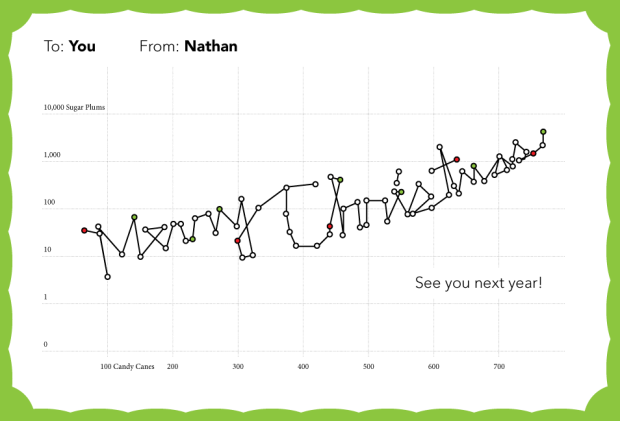While we’re on the topic of academic papers and how they’re linked, Johan Bollen et. al used clickstream data to draw detailed maps of science, from the point of view of those actually reading the papers. That is, instead of relying on citations, they used log data on how readers request papers, in the form of a billion user interactions on various web portals.
Maps of science derived from citation data visualize the relationships among scholarly publications or disciplines. They are valuable instruments for exploring the structure and evolution of scholarly activity. Much like early world charts, these maps of science provide an overall visual perspective of science as well as a reference system that stimulates further exploration. However, these maps are also significantly biased due to the nature of the citation data from which they are derived: existing citation databases overrepresent the natural sciences; substantial delays typical of journal publication yield insights in science past, not present; and connections between scientific disciplines are tracked in a manner that ignores informal cross-fertilization.
Cross-fertilization. Saucy.
Each circle represents a journal and edges represent connections between journals, according to Johan Bollen et. al’s clickstream model. Circles are color-coded by journal classifications from the Getty Research Institute’s Art and Architecture Thesaurus.
So you have most of the engineering and physical sciences on the perimeter, medical-related areas to the left, and liberal arts is that middle cluster. Statistics is towards the top left, mixed in with demographics, philosophy, and sociology. There aren’t many surprises in the clusters, but there are interesting, albeit weaker, links in the open spaces, such as religion and chemistry or music and ecology.
[PLoS ONE | Thanks, @drewconway]







 Visualize This: The FlowingData Guide to Design, Visualization, and Statistics (2nd Edition)
Visualize This: The FlowingData Guide to Design, Visualization, and Statistics (2nd Edition)










